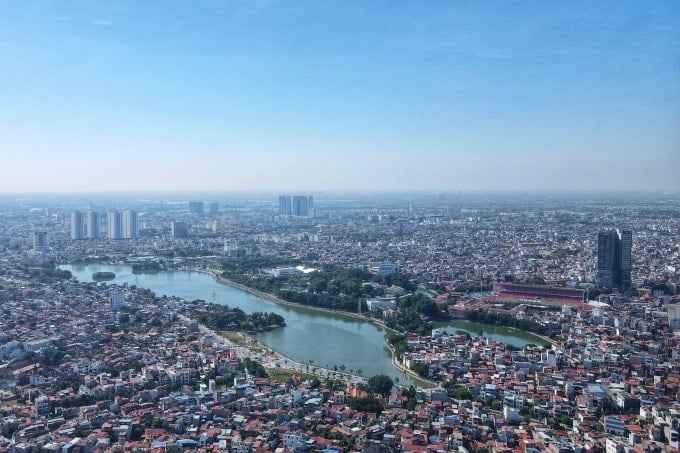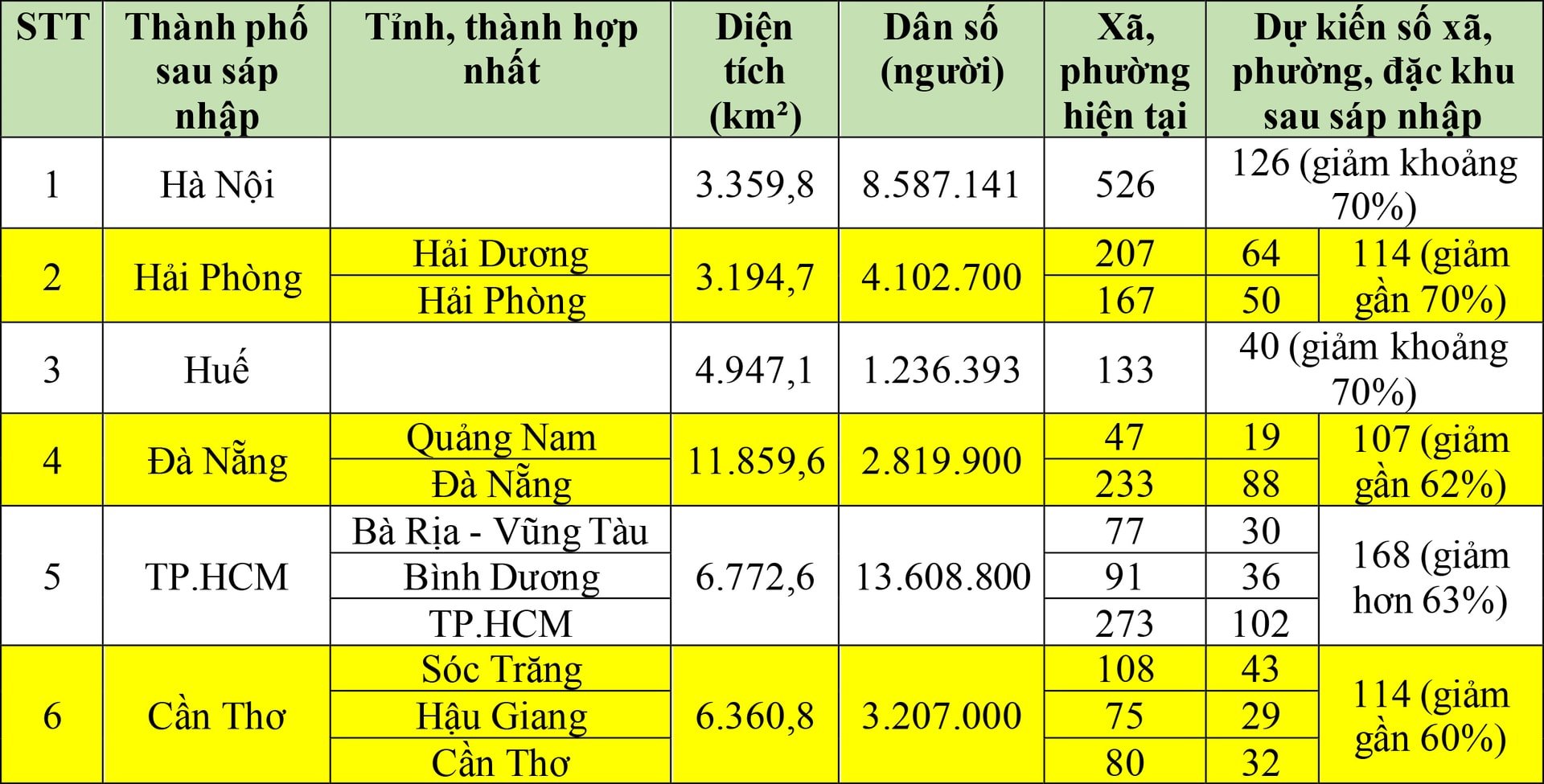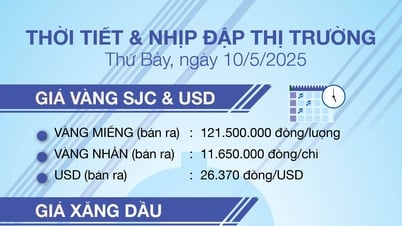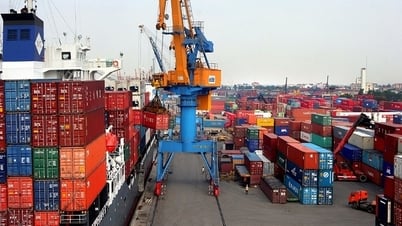
According to Resolution No. 60 of the 11th Central Conference, the Party Central Committee agreed that the number of provincial-level administrative units after the merger is 34 provinces and cities (including 28 provinces and 6 centrally-run cities).
Of which, 6 centrally-run cities include: Hanoi; Hai Phong (merging Hai Duong province and Hai Phong city); Hue; Da Nang (merging Quang Nam province and Da Nang city); Ho Chi Minh city (merging Ba Ria - Vung Tau province, Binh Duong province and Ho Chi Minh city); Can Tho (merging Soc Trang province, Hau Giang province and Can Tho city).
After the merger, Da Nang is the centrally-governed city with the largest area of 11,859.6 km², followed by Ho Chi Minh City (6,772.6 km²), Can Tho (6,360.8 km²), Hue (4,947.1 km²) and Hanoi (3,359.8 km²).

Hai Phong becomes the centrally-governed city with the smallest area, reaching 3,194.7 km².
In terms of population, Ho Chi Minh City is the most populous city in the country with over 13.6 million people, followed by Hanoi with nearly 8.6 million people. Hue is the city with the lowest population in the group, only about 1.2 million people.
In addition to changes in area and population size, the appearance of centrally-run cities will also have many differences.
Specifically, according to the project to rearrange commune-level administrative units, the number of communes, wards, and special zones of centrally-run cities is expected to decrease by 60-70%.
Up to now, it is expected that after the reorganization, Hanoi will have 126 communes and wards; Hai Phong (new) will have 114 communes and wards; Hue will have 40 communes and wards; Da Nang (new) will have 107 communes and wards; Ho Chi Minh City (new) will have 168 communes and wards; Can Tho (new) will have 114 communes and wards.
VN (according to VTC News)Source: https://baohaiduong.vn/quy-mo-va-so-xa-phuong-cua-6-thanh-pho-truc-thuoc-trung-uong-sau-sap-nhap-409824.html


























![[Photo] General Secretary To Lam meets with Chairman of the Federation Council, Parliament of the Russian Federation](https://vphoto.vietnam.vn/thumb/1200x675/vietnam/resource/IMAGE/2025/5/10/2c37f1980bdc48c4a04ca24b5f544b33)
![[Photo] Ho Chi Minh City: Many people release flower lanterns to celebrate Buddha's Birthday](https://vphoto.vietnam.vn/thumb/1200x675/vietnam/resource/IMAGE/2025/5/10/5d57dc648c0f46ffa3b22a3e6e3eac3e)

































































Comment (0)